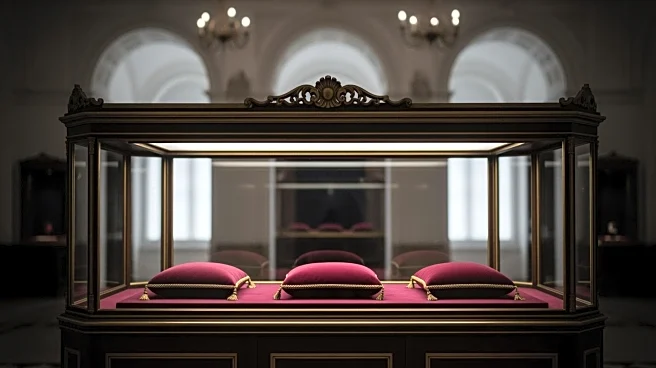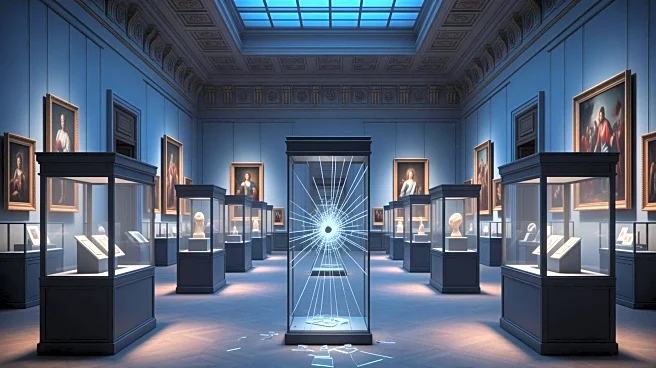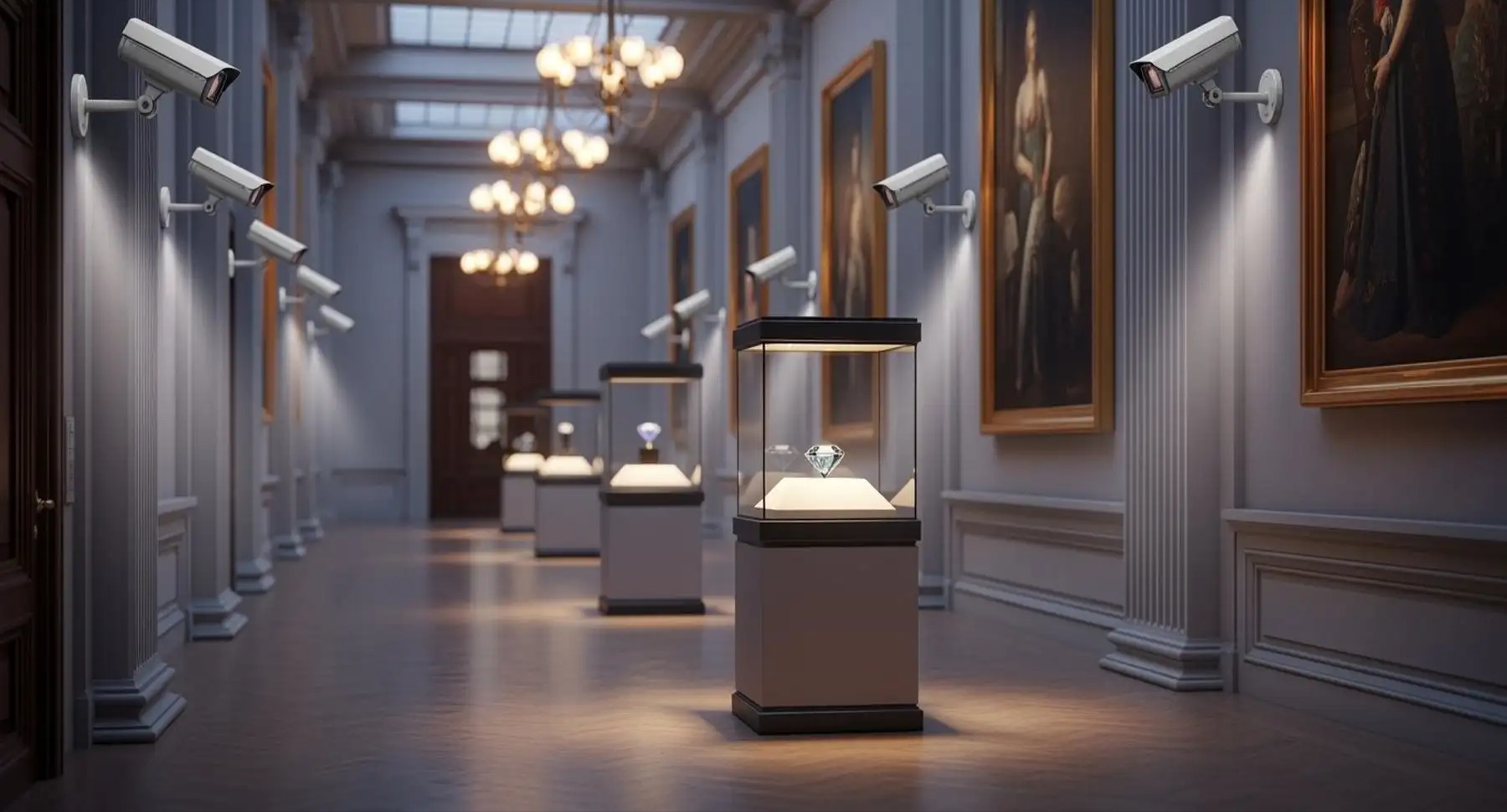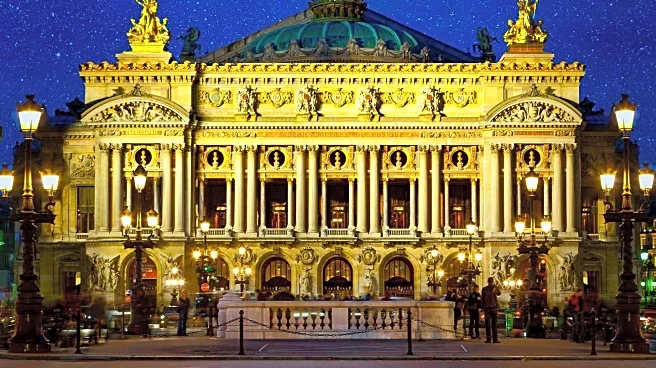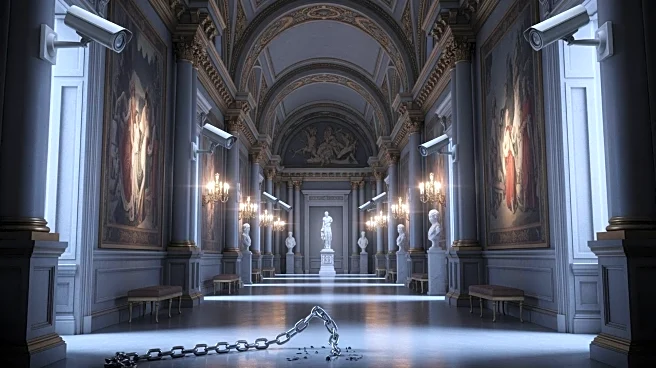What's Happening?
French authorities have made significant progress in the investigation of a high-profile theft at the Louvre Museum in Paris. According to the Paris prosecutor, several suspects have been apprehended in connection
with the theft of crown jewels from the museum. The arrests mark a crucial development in the case, which has drawn comparisons to fictional heists depicted in popular culture, such as those in Dan Brown's novels and the Ocean's film franchise. The theft, characterized by its dramatic execution, has captured international attention, highlighting the ongoing challenges faced by cultural institutions in safeguarding valuable artifacts.
Why It's Important?
The arrest of suspects in the Louvre heist case underscores the persistent threat of art and cultural theft, which poses significant risks to heritage preservation. The recovery of stolen artifacts is crucial not only for the protection of cultural heritage but also for maintaining public trust in museum security. This incident highlights the need for enhanced security measures and international cooperation in combating art theft. The successful apprehension of suspects may deter future criminal activities targeting cultural institutions, thereby safeguarding invaluable historical treasures.
What's Next?
Following the arrests, French authorities are expected to continue their investigation to determine the full extent of the criminal network involved in the heist. The focus will likely be on recovering the stolen crown jewels and ensuring they are returned to the Louvre Museum. Additionally, the case may prompt a reevaluation of security protocols at cultural institutions worldwide, potentially leading to the implementation of more advanced surveillance technologies and collaborative efforts among international law enforcement agencies to prevent similar incidents.
Beyond the Headlines
The Louvre heist case raises broader questions about the ethical and legal dimensions of art theft. It highlights the ongoing debate over the ownership and repatriation of cultural artifacts, particularly those with contested histories. The incident may also influence public discourse on the role of museums in preserving cultural heritage and the responsibilities of governments in protecting national treasures. As the investigation unfolds, it may shed light on the motivations behind art theft and the underground market for stolen artifacts.


